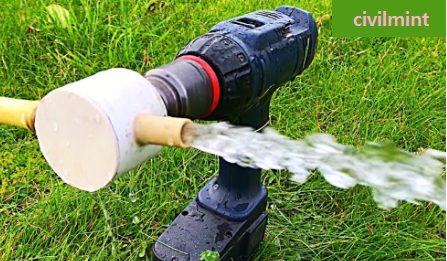The drill pump is the most famous type of pump used to pump non-combustible liquids. The drill pump does not have an internal electric motor to drive the impeller. Instead, it uses a standard drill-powered hand pump to transfer fluids.
Power from the drill motor drives the turbine, which extracts fluid from the turbine and redirects it to the other side of the outlet pipe housing.
The drill pump does not have the function of a standard pump. These pumps cannot move large volumes of liquid over long distances. It is powered by a hand drill for fluid transfer. The drill drives the impeller to suck the liquid out of the inlet and then out of the outlet.

The drill pump is powered by attaching the main pump mechanism to the electric drill. They are offered in many shapes and sizes and are manufactured by many small household, commercial and industrial tool makers.
How does a Drill Pump work?
The drill pump has a simple structure and operation. It has a central section that has clearly marked intake and exhaust sides. The center section is circular and includes a mechanism on one side of the circle for attachment to an adjustable power drill.
When the well water pump starts working, the impeller begins to rotate, drawing water from the inlet valve. As the impeller rotates, the volume between the impellers increases, creating a low-pressure zone where atmospheric pressure and static pressure push water into the pump’s interior.
Impeller converts water velocity into pressure and increases water pressure. After passing through the impeller, the water at increased pressure is brought to the outlet area from where it is discharged. The drill pump is limited by the capacity of the drill press and can only transfer small amounts of liquid.
Advantages of Drill Pump
- You can easily drain small items and pools.
- It is cheap and convenient because it comes with a tube.
- It offers work according to your requirements.
- Easy to use.
